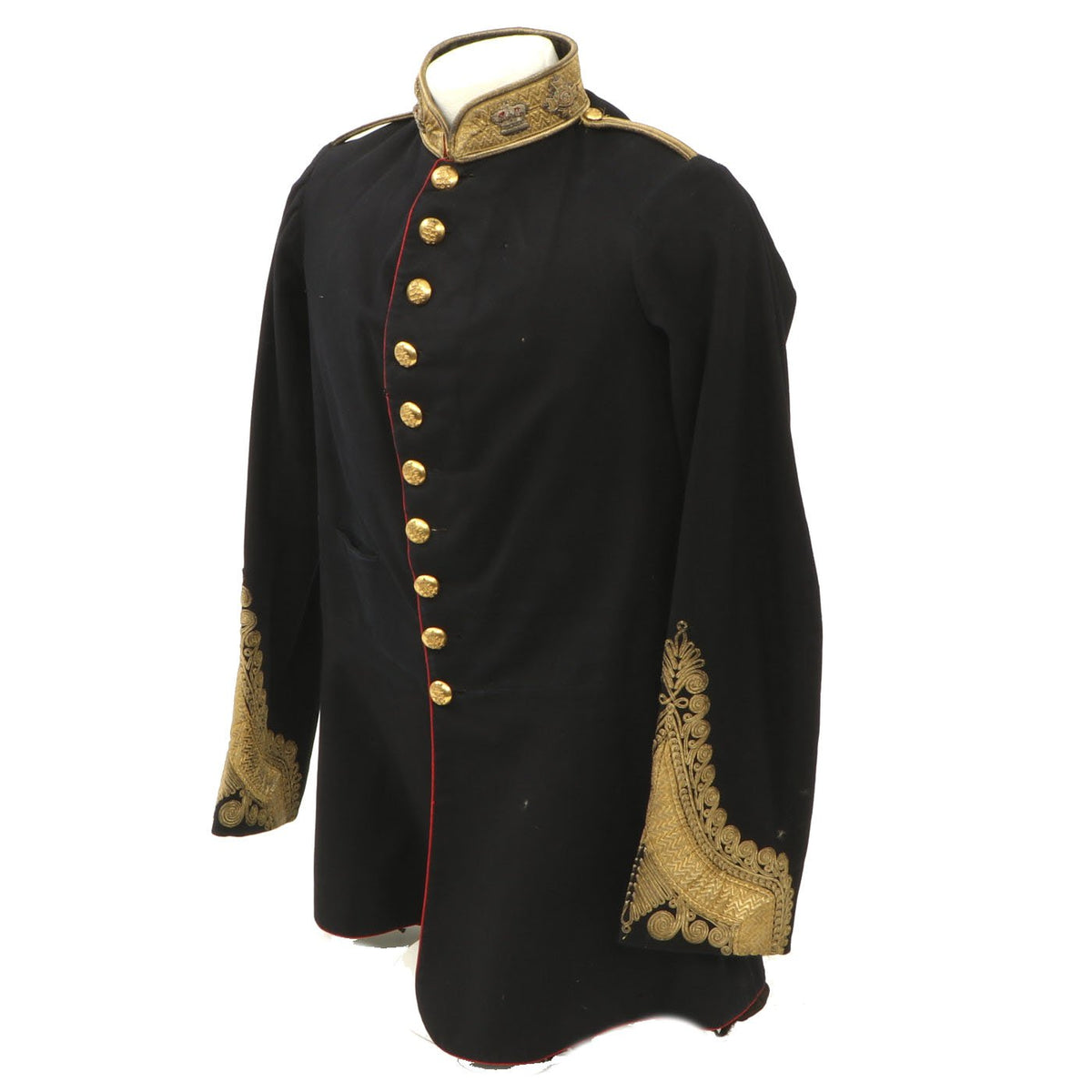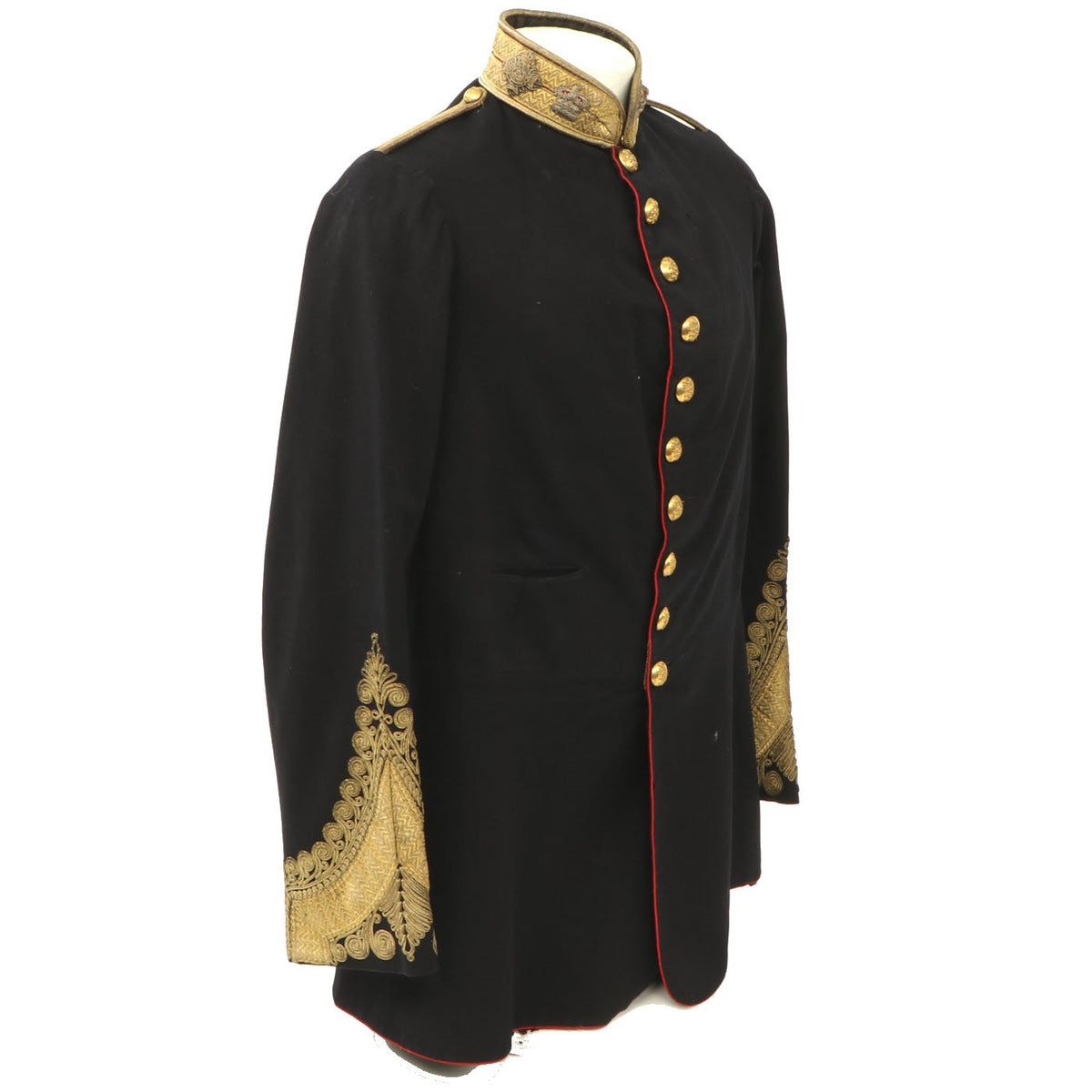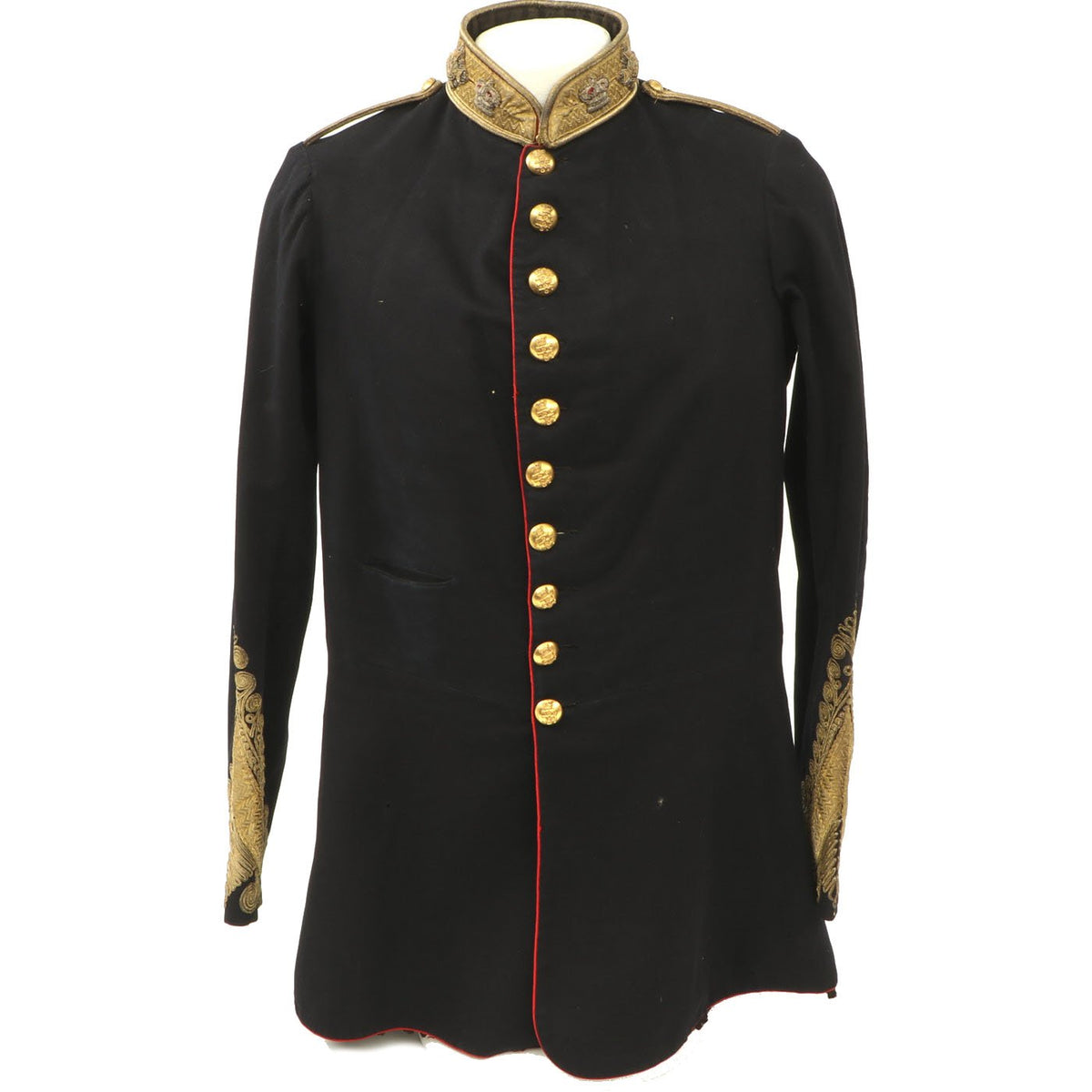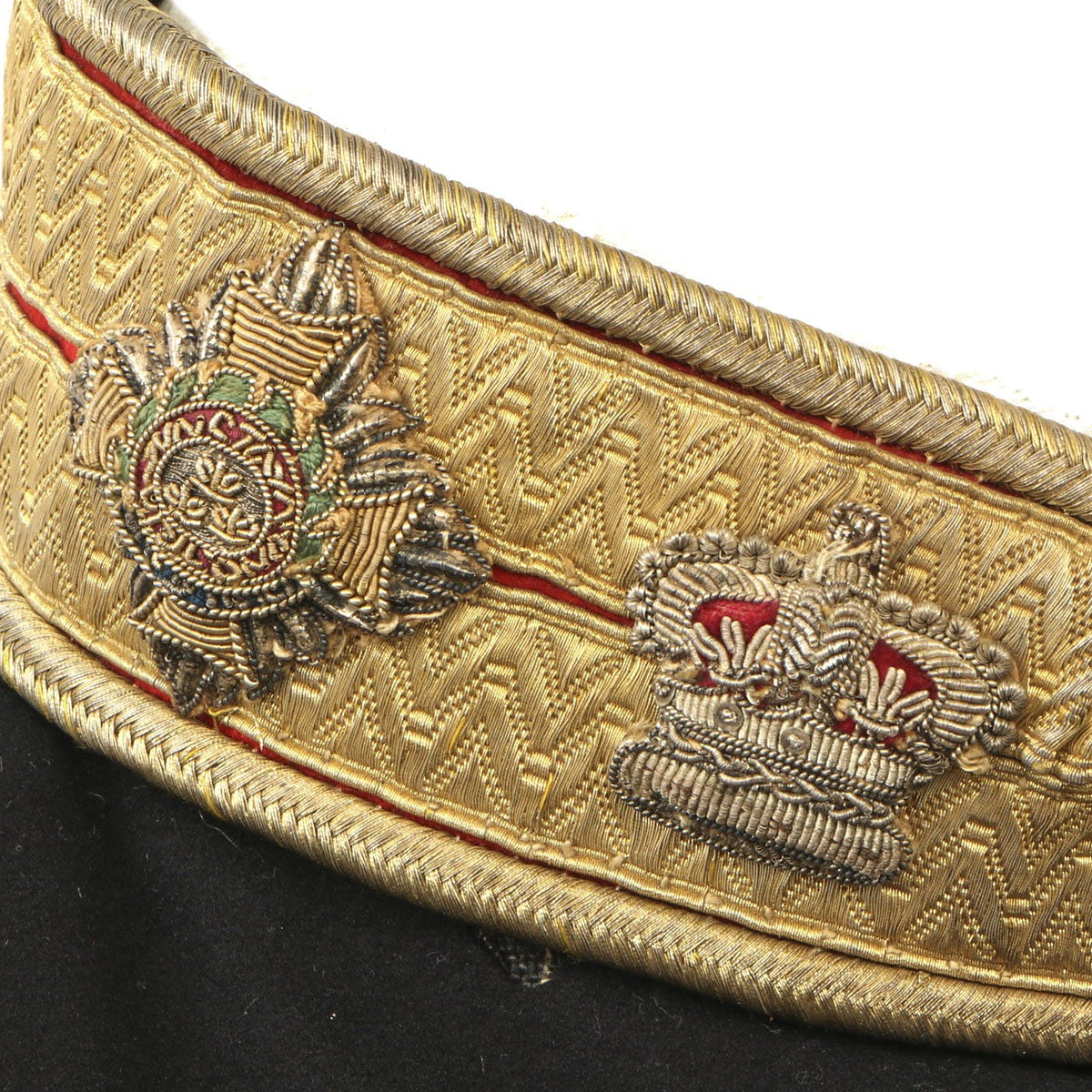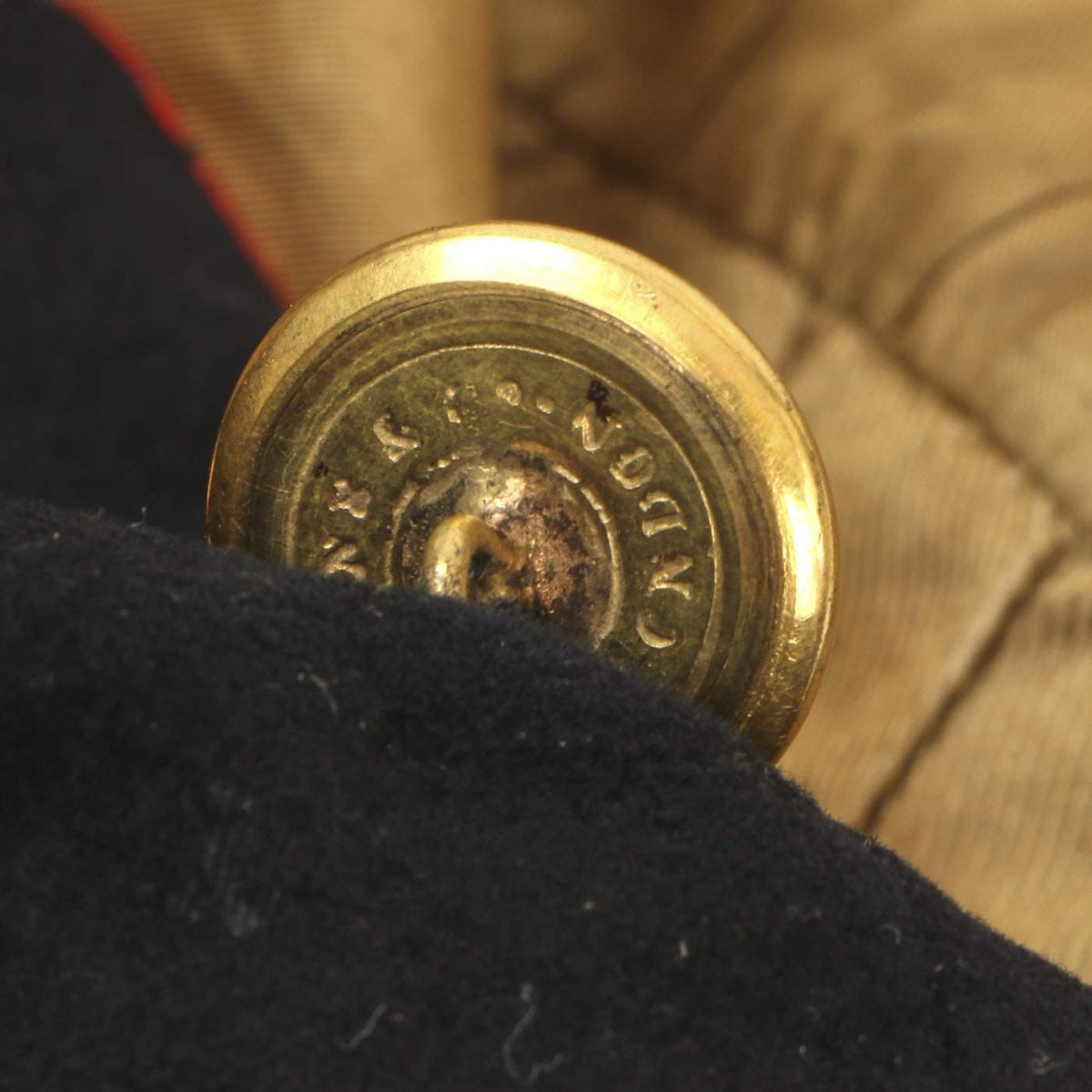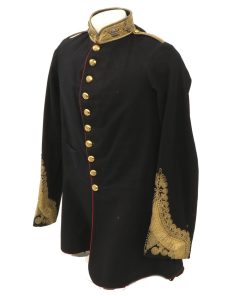Original British Victorian Era Royal Artillery Officer’s Winter Dress Uniform Jacket Original Items
$ 495,00 $ 148,50
Original Item: Only One Available. Dating from the Victorian Era era this fine jacket is in very good condition and features original Royal Artillery gilt buttons and wonderfully detailed cuff braiding.
Approximate Measurements:
Collar to Shoulder: 8.5″
Shoulder to Sleeve: 25.5″
Shoulder to Shoulder: 16″
Chest width: 19″
Waist width: 18″
Hip width: 24″
Front length: 34″
The Royal Regiment of Artillery, commonly referred to as the Royal Artillery (RA) and colloquially known as “The Gunners”, is the artillery arm of the British Army. The Royal Regiment of Artillery comprises thirteen Regular Army regiments, King’s Troop Royal Horse Artillery and five Army Reserve regiments.
The regiment was involved in all major campaigns of the Napoleonic Wars; in 1804, naval artillery was transferred to the Royal Marine Artillery, while the Royal Irish Artillery lost its separate status in 1810 after the 1800 Union. This period also saw development of the Congreve rocket; based on an existing Indian design, these were the first solid-fuel projectiles used by the British army and two rocket troops were established in 1814. Their use in the War of 1812 is referenced in the line “rocket’s red glare” which appears in the Star-Spangled Banner.
After Waterloo in 1815, Europe was at peace until the 1853 Crimean War.
The Militia, which had been a paper tiger since the end of the Napoleonic Wars, was reorganized under the Militia Act of 1852 in response to the threat of invasion by France, changing it from a conscripted force to one made up of volunteers who engaged for terms of service. The force continued to be a reserve tasked with home defense, embodied for annual training, and for the duration of wars or emergencies.[15][16] The Militia had been principally an infantry force to this date,[15] but Militia Artillery units were added from this point, and some existing Militia Infantry regiments were converted to coastal artillery. The role of the Militia Artillery was to man coastal defenses and fortifications in wartime, relieving the Royal Artillery (RA) for active service.
The Royal Artillery (and also of the Royal Engineers, Royal Sappers and Miners, the Commissariat Department, and various barracks, ordnance stores, and transport departments) was transferred to the British Army when the Board of Ordnance was abolished in 1855 (the administrative branches of the Board were absorbed by the War Office)[18] and the War Office School of Gunnery established in Shoeburyness in 1859. When the British East India Company was dissolved in 1862, its artillery function was absorbed by the Royal Artillery, giving it a total strength of 29 horse batteries, 73 field batteries and 88 heavy batteries. Military expenditure estimates for 1872 list the regimental strength as a total of 34,943 men and officers, including those in India.
Although the Militia and the Volunteer Force remained separate forces, during the latter half of the Nineteenth Century they were re-organised through a succession of reforms, and increasingly integrated with the British Army. In 1882, the Militia Artillery units lost their individual identities, becoming numbered brigades organised within Royal Artillery territorial divisions (two brigades of horse artillery, four brigades of field artillery and eleven territorial divisions of garrison artillery). In 1889 the number of divisions was reduced to three, and the Militia Artillery brigades were renamed again, mostly regaining some variation of their original territorial names.
Prior to 1882, each Militia Artillery unit in the United Kingdom wore a unique badge. Between 1882 and 1889, Militia Artillery brigades wore a divisional badge based on that of the Royal Artillery, except that the lower scroll and upper scroll, which on the Royal Artillery badge were inscribed “Quo Fas Et Gloria Ducunt” and “Ubique” (which indicated the regular Royal Artillery, like the Royal Engineers, served everywhere), were respectively inscribed with the name of the territorial division name (by example, North Irish Division) and left blank or covered in a spray of laurel (as the Militia and Volunteer Force were both home defence forces, the members of which could not be sent abroad on expedition without their consents).[15] From 1889 to 1902, the lower scroll was inscribed with the name of the unit (by example, Antrim Artillery) and the upper scroll left blank or covered in a spray of laurel. Grenade badges, whether worn as a collar badge or elsewhere, lacked the scroll inscribed “Ubique” that was part of the regular Royal Artillery version. Militia Artillery units were made up of Militia officers and other ranks, with a Permanent Staff made up of seconded Royal Artillery officers and senior other ranks, including a single officer acting as both Commandant and Adjutant (where a suitably qualified Militia officer was unavailable to serve as Commandant), or only as Adjutant where the Commandant was a Militia officer.
Fast Shipping with Professional Packaging
Thanks to our longstanding association with UPS FedEx DHL, and other major international carriers, we are able to provide a range of shipping options. Our warehouse staff is expertly trained and will wrap your products according to our exact and precise specifications. Prior to shipping, your goods will be thoroughly examined and securely secured. We ship to thousands clients each day across multiple countries. This shows how we're dedicated to be the largest retailer on the internet. Warehouses and distribution centres can be located throughout Europe as well as the USA.
Note: Orders with more than one item will be assigned a processing date depending on the item.
Before shipping before shipping, we'll conduct a thorough inspection of the items you have ordered. Today, the majority of orders will be delivered within 48 hours. The delivery time will be between 3-7 days.
Returns
The stock is dynamic and we cannot completely manage it because multiple stakeholders are involved, including our factory and warehouse. So the actual stock may alter at any time. It's possible that you may not receive your order once the order has been made.
Our policy is valid for a period of 30 days. If you don't receive the product within 30 days, we are not able to issue a refund or an exchange.
You can only return an item if it is unused and in the same state as the day you received it. You must have the item in its original packaging.
Related products
Uncategorized
Uncategorized
Uncategorized
Uncategorized
Uncategorized
Uncategorized
Australian WWII Owen MK1 Machine Carbine SMG Custom Fabricated Replica with Sling Original Items
Uncategorized
Uncategorized
Uncategorized
Uncategorized
Uncategorized
Uncategorized
Uncategorized
Uncategorized
Uncategorized
Uncategorized
Uncategorized
Uncategorized
